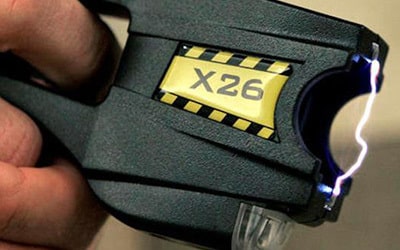Last month, the U.S. Court of Appeals for the 11th Circuit, which sets legal precedent for the states of Florida, Alabama, and Georgia, ruled that a jury could find that police used unconstitutional excessive force when they tasered a man recovering from a diabetic seizure.
In 2010, police responded to a 911 call that a man had collapsed in a supermarket. Medics placed the unresponsive man on a stretcher and put him in the ambulance. When the man regained consciousness, he asked for something sweet to eat but did not say that he was diabetic. The medics told him that he would be taken in for an involuntary psychiatric evaluation. The man then tried to leave the ambulance, but the medics physically struggled with him to stop him from leaving.
The medics ultimately left the ambulance and called police. The medics told police that the man might be “on illegal drugs.” Police entered the ambulance and found the man lying on the ambulance floor. Police ordered the man to get on the stretcher and when he did not, they started to taser him without warning. Ultimately, the police tasered him nine times, lasting 49 seconds.
Eventually, the man was placed on the stretcher and medics drove him to the hospital. The medics then discovered his low blood sugar, and the man was treated and released from the hospital. He was not charged with any crime.
The man ultimately filed a lawsuit against police for excessive force and unconstitutional use of a taser. He had collapsed from a diabetic seizure and needed treatment, not tasering. The district court dismissed the lawsuit, but on appeal last week the 11th Circuit held that the case should go to trial. The court held “When we view the evidence in the light most favorable to Boynton, Norton’s use of force appears to be excessive. He did respond to a call about a “combative” medical patient, but by the time he arrived Boynton was not combative at all. In fact, he was barely responsive, lying immobile on the floor of the ambulance. When Norton told him to get onto the stretcher, Boynton did not move, but he also did not struggle or argue when Norton moved him. Norton admits that the only “resistance” he encountered was when Boynton “tensed” his body, making it difficult for him to reposition Boynton on the stretcher. In response, Norton tased Boynton nine times, eight of which were after Boynton had agreed to comply with Norton’s demands. Based on those facts, a reasonable juror could conclude that Norton’s use of force was disproportionate to any threat Boynton posed and was unreasonably excessive under the circumstances.”
The court further held: “Norton emphasizes that the police department’s use of force policy allows officers to use a “stun gun” on suspects who exhibit “active physical resistance,” which is defined to include “bracing or tensing.” Two things about that. First, that policy does not guide our analysis — the Fourth Amendment does. Second, we do not suggest that “tensing” will never justify the use of a stun gun or taser under any circumstances. We hold only that from the evidence in the record a jury could find Norton’s use of a taser on Boynton nine times was unreasonable under the circumstances.”
Finally, the court rejected the police argument that the law was not clearly established on this issue, finding: “In 2009 this Court considered the reasonableness of an officer’s repeated use of a taser on an individual who was not accused of any crime; who did not pose an immediate threat to the officer or others; who was not belligerent or aggressive; and who was not trying to flee or evade arrest. . . . In light of [the] Oliver [opinion], a reasonable officer in Norton’s position would have known that repeatedly tasing Boynton, who was not argumentative, aggressive, or mobile, was unreasonable under the Fourth Amendment. Norton is not entitled to qualified immunity on Boynton’s excessive force claim at this time.”

